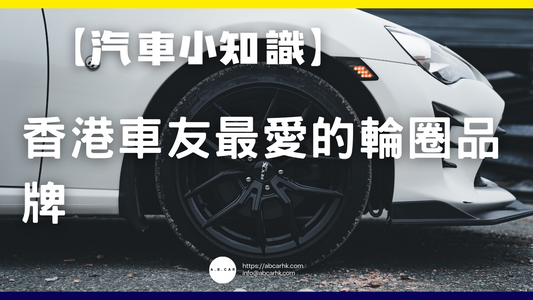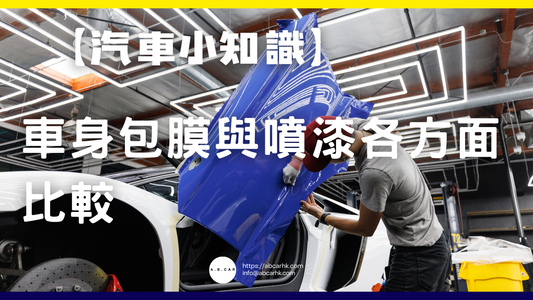[Road Trivia] Which is Hong Kong’s first road tunnel?

Most Hong Kong residents frequently travel through various tunnels, such as the Hung Hom Tunnel, the Island Eastern Corridor, the Western Harbour Crossing, and the Lion Rock Tunnel, as they commute between Hong Kong, Kowloon, and the New Territories. However, if you were to ask, " What was Hong Kong's first true road tunnel?" many would likely get it wrong. As a car editor, I'll explain this little-known fact: "Which was Hong Kong's first road tunnel? " I'll also delve into its history, significance, interesting facts, and impact, so you can learn all you need to know and never get it wrong again!
1. Answer: Hong Kong's first road tunnel
Correct answer: Lion Rock Tunnel
2. Historical Background and Reasons for Construction
1. Hong Kong's rapid development in the 1960s
In the 1960s, Hong Kong's population surged, and Kowloon's urban area began to become saturated. The government actively developed the New Territories, particularly Sha Tin and Ma On Shan. However, the roads connecting the New Territories and Kowloon were very limited, primarily Tai Po Road and Lion Rock Road. These narrow, winding roads were prone to traffic jams, making transportation extremely inconvenient.
2. Concept of building a road tunnel
In order to solve the development and traffic bottleneck in the New Territories, the Hong Kong government decided to build a tunnel specifically for cars under Lion Rock. This became the first roller-mountain tunnel designed specifically for cars in Hong Kong's history.
3. Project implementation
Construction of the Lion Rock Tunnel began in 1967 and was completed and opened to traffic in 1969. It is about 1.4 kilometers long and initially only had a single tube for two-way traffic. It was able to divert a large amount of traffic from Sha Tin, Fo Tan and other places in the New Territories to and from Kowloon every day.
3. The Significance of the Lion Rock Tunnel
1. Promote the development of Shatin District in the New Territories
The Lion Rock Tunnel can be said to have "opened up the Ren and Du meridians", enabling the rapid urbanization of Sha Tin and Ma On Shan, driving the population to move north, and was also a key infrastructure for the future takeoff of Sha Tin New Town.
2. The beginnings of Hong Kong’s modern transport system
It is Hong Kong's first true automobile tunnel, representing Hong Kong's transition from the "mountain road era" to a new era of "modern and efficient road network" - only then did large-scale projects such as the Hung Hom Tunnel (1972), Eastern Harbour Crossing (1989) and Western Harbour Crossing (1997) appear one after another.
3. Facilitate citizens’ daily travel
In the past, traveling from Sha Tin to Kowloon required a long detour and took a long time. With the construction of the tunnel, even 1960s-era "minibuses", trucks, and minibuses can quickly cross the mountain, greatly reducing travel time.
4. Interesting and cool facts
- The Cross Harbour Tunnel was not the first : although the Cross Harbour Tunnel is very famous, it was actually completed three years later than the Lion Rock Tunnel (it was opened in 1972).
- The tunnel originally only charged $2 : the toll was extremely low back then, compared to the current tolls of more than ten or twenty dollars, it was simply "affordable".
- Single-tube two-way → Double-tube two-way : In 1978, a second tube was added, which was later divided into southbound and northbound tubes to solve the problem of large-scale traffic congestion.
- "Lion Rock Spirit" : The tunnel is named after the majestic Lion Rock, which is not only a landmark but also symbolizes the hard-working and indomitable spirit of Hong Kong people, becoming a collective memory of a generation.
5. Current Situation and Roles
- With a daily traffic volume exceeding 100,000 vehicles , it remains an important hub for travel between the New Territories and Kowloon (traffic jams are common during peak hours, especially).
- Multiple bus routes, special minibuses and taxis will pass through , benefiting commuters, students and family drivers.
- Toll booths are now electronic and accept multiple payment methods such as Octopus and Easy Payment.
- The government continues to repair and expand facilities to cope with the increasing traffic and demand from car owners.
6. My personal observations and stories
As a car editor who frequently travels between the New Territories and Kowloon, I have a love-hate relationship with the Lion Rock Tunnel. I love the fact that it allows me to quickly travel through the mountains and feel the greatness of Hong Kong's infrastructure. But I hate the fact that during rush hour, traffic jams can last for more than half an hour, and it's not uncommon to see traffic jams stretching from the tunnel to Sun Tin Wai.
Sometimes when I pass through the tunnel at night and see the bright lights at the foot of Lion Rock, I always think of the words "Under the Lion Rock" and feel that this tunnel has witnessed the history of Hong Kong's transformation from a fishing port to a city.
VII. Summary
The Lion Rock Tunnel is not only Hong Kong's first road tunnel, but also a pivotal infrastructure project in the city's development history. It marked the transition from a "mountain road" to a "modern tunnel" era, laying the foundation for the rise of residents in the New Territories and the new town of Sha Tin. Every driver who passes through this tunnel daily is, in fact, "traveling through history"!
I hope everyone will recall the origin, significance, and stories of the Lion Rock Tunnel the next time they pass through it. Turning obscure facts into "hot" knowledge will make driving a little more nostalgic!
If you’d like to know more about Hong Kong tunnels and other interesting historical facts, feel free to leave a message and we’ll explain them in depth!



